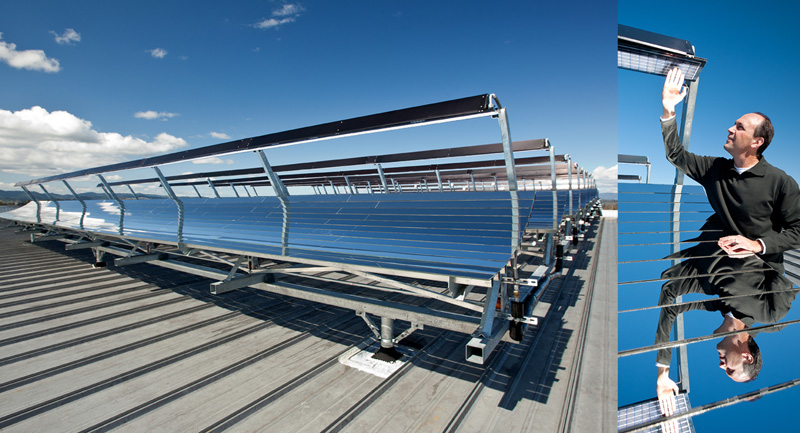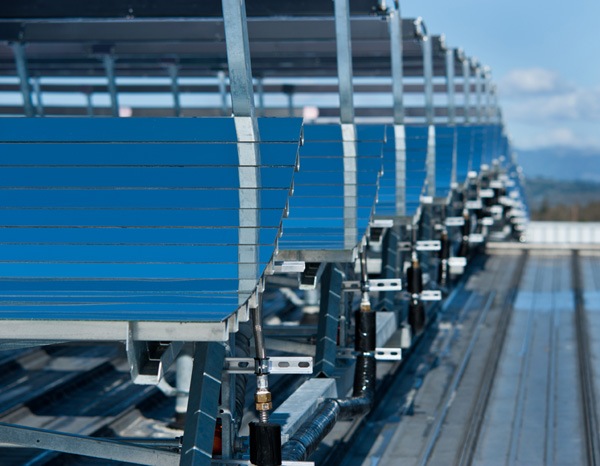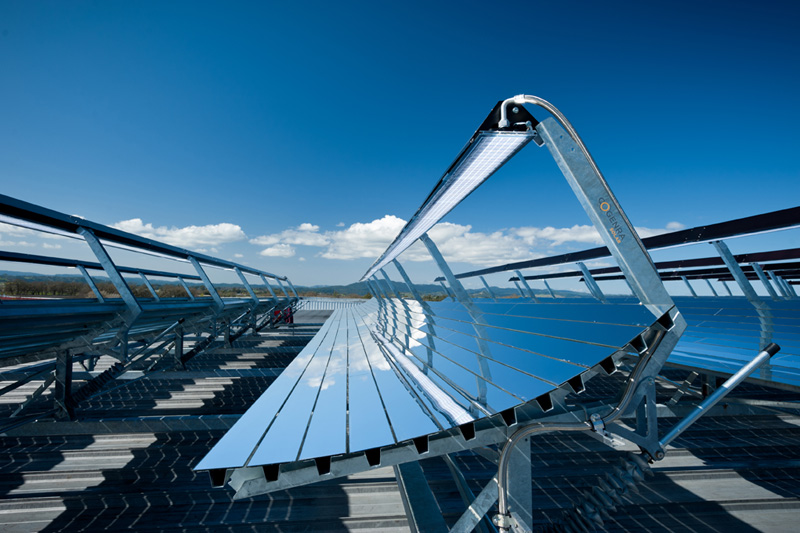Back Issues
Solar powered wine productionA Kendall-Jackson winery in California is benefiting from both the heat and power provided by the sun through a solar cogen system developed by Cogenra Solar. By Tony Kryzanowski
The company has installed the largest rooftop solar cogeneration array in the U.S. at its Kittyhawk winery in Windsor, California. It provides the winery with both solar power and hot water. The Kittyhawk installation was a test case for Kendall-Jackson, and given its success, the company decided to proceed with two additional, similarly-sized rooftop installations at its Vinwood estate in Sonoma County and another winery in Monterey County. The goal is to eventually install the technology at all 10 of its domestic and international wineries. There is also potential for project expansion at Kittyhawk, beyond its blending and bottling facilities. The 96-module, 241 kilowatt hybrid solar photovoltaic and thermal array supplied by Cogenra and installed by SunWater Solar will provide the Kittyhawk winery with 15 percent of its power needs and 60 percent of its hot water needs. The installation covers about 9,000 square feet on the winery's blending and bottling facility roof. "With solar cogeneration and the Cogenra system, the payback was much more attractive than photovoltaics alone, and the incentives on solar thermal are quite strong," says Robert Boller, vice-president of sustainability at Kendall-Jackson. The winemaker has a long history of supporting, investigating, and implementing energy conservation and renewable energy opportunities. It has a three-step energy conservation program that first looks at how it can reduce energy demand from its processes, how it can re-commission or replace equipment with high efficiency equipment, and how it can invest in renewable energy either onsite or offsite. The company has conducted case studies for installing solar and wind projects at all its facilities. The Cogenra solar cogen technology was a good fit for Kendall-Jackson because of the nature of its manufacturing process. "We essentially are a food processor so sanitization is a key component of food safety in the quality of our product," says Boller. "Therefore, we use a lot of hot water. Being able to pre-heat that water with a solar cogen system and provide electricity as a bonus is a natural fit for us." Finding ways to increase the energy efficiency of solar power systems so that they can better compete with conventional power generation systems has been a major focus of the industry for decades. What is exciting about this combined solar power and heat recovery installation from a technological advancement point of view is that the system increases the energy conversion ratio of the solar system from 15 percent to 75 percent, says Dr. GiladAlmogy, CogenraSolar's CEO.
The company has completed a number of installations, including a project for another winemaker, a dorm building at the University of Arizona, projects for the U.S. Army and Navy, and the Facebook fitness center where the installation provides power and hot water for people to use for showering. "What makes a site a good fit for this technology is power production as well as the ongoing and continuous demand for heat," says Almogy. In addition to generating its own projects, he says that Cogenra would like to supply the equipment and guides and train other companies to market and install the system themselves. Cogenra is marketing concentrating photovoltaic thermal technology. The sun's rays reflect off mirrors that track the sun's movement and project the light energy onto downward facing photovoltaic (PV) cells. Each cell generates solar power while reflecting and concentrating the light to one location. The cells that capture the solar energy and convert it into electricity are black, silicon-based cells that emit a lot of heat energy. "What we do is flow a water/glycol solution behind these cells, which takes the heat away," says Almogy. "In the process, the cells are cooled down and the captured heat is used to heat the water for the winery." He says that improving the performance of the silicon-based cells from concentrated solar energy and developing the cogeneration array (which allows for both solar power generation and heating water) were the significant breakthroughs that Cogenra has developed and commercialized.
|











